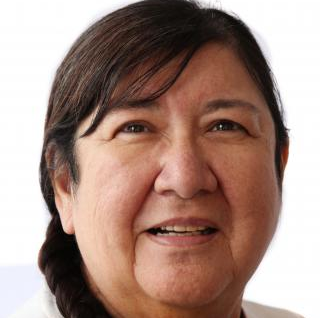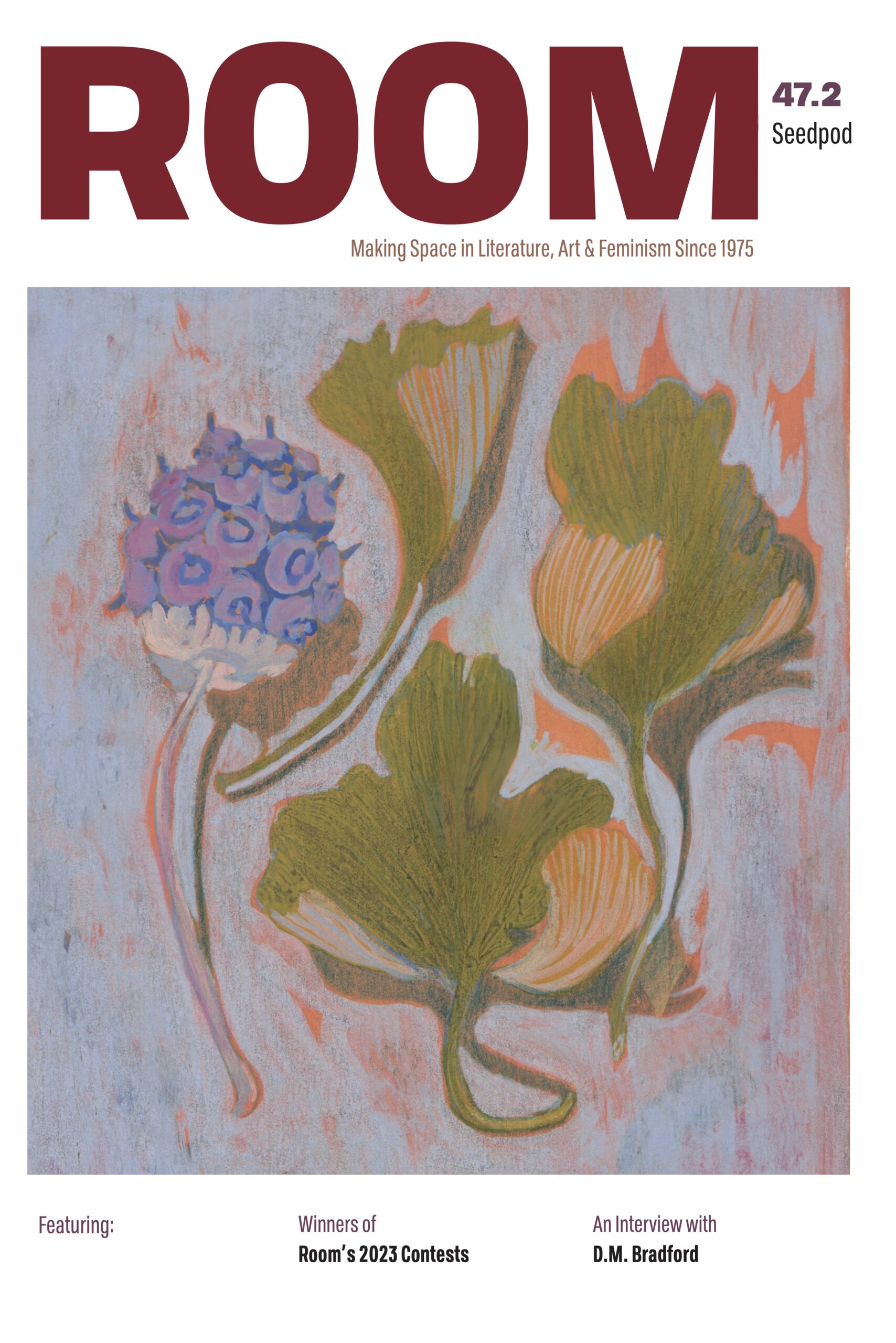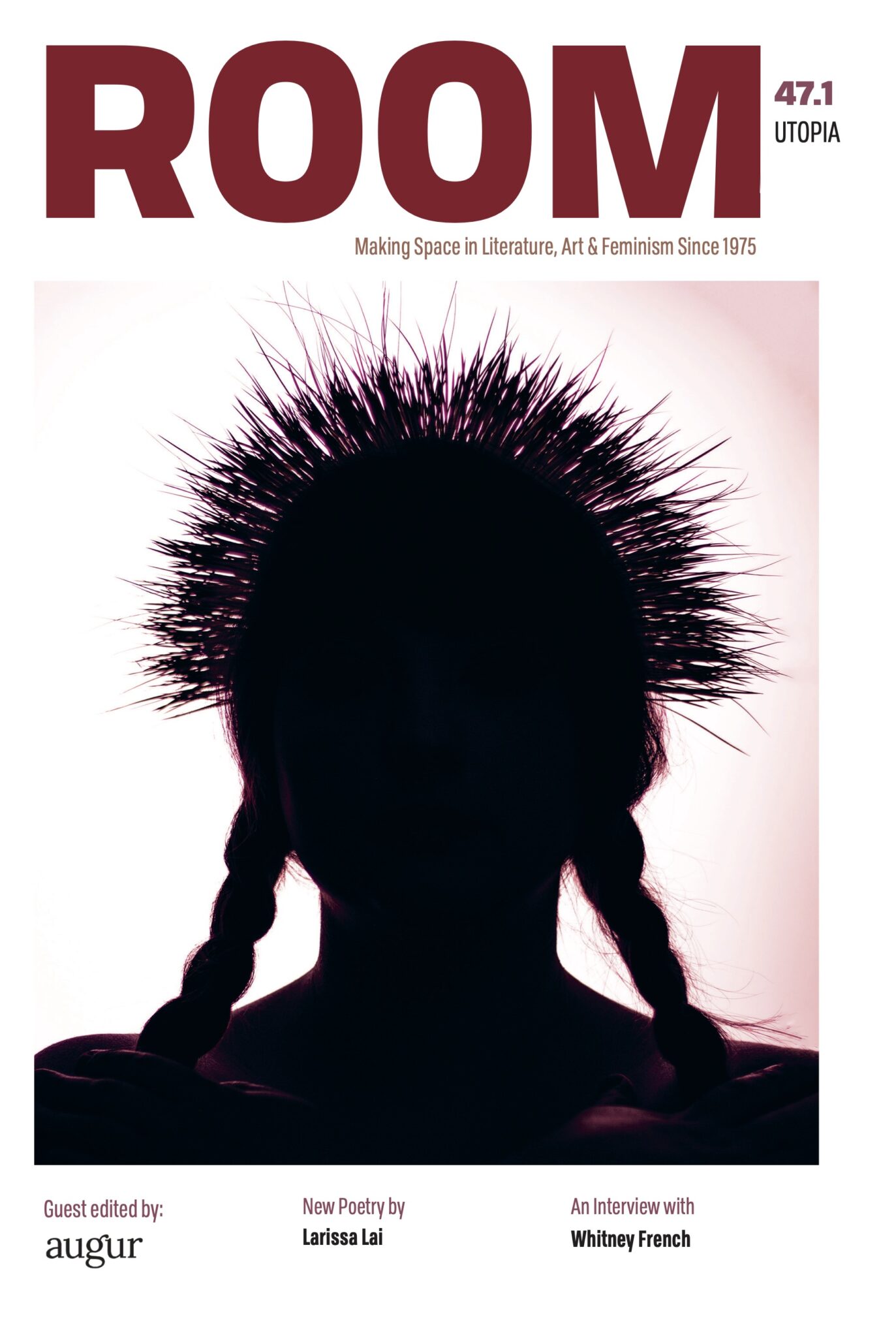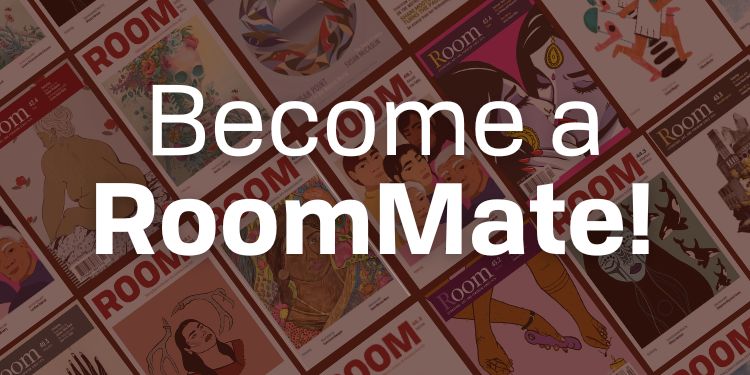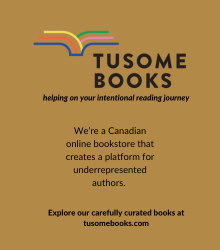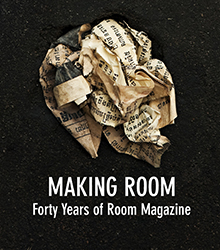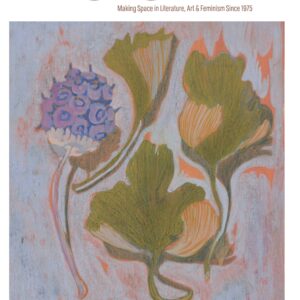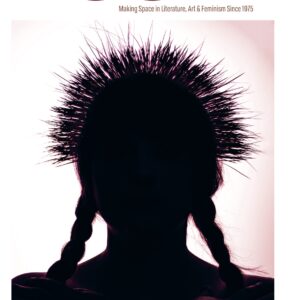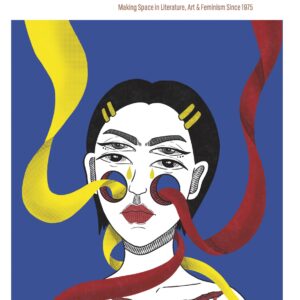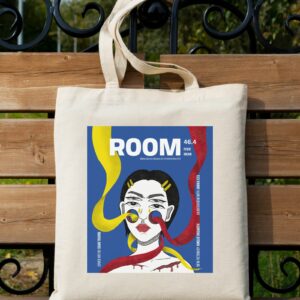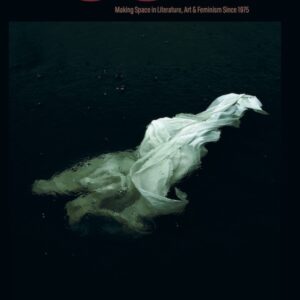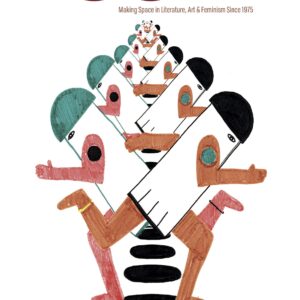In the following interview, Annharte discusses her writing practice, safe places, remembering family, good storytelling, and more.
Marie Annharte Baker is an Anishnabe contemporary storyteller living in Winnipeg. A poet, essayist, playwright, and oral storyteller, Annharte brings the vernacular of her lived experience to the page, creating work that gives voice to silence, trauma, and ancestry. In early 2015 she won the inaugural Blue Metropolis First Peoples Literary Prize for her fourth poetry collection, Indigena Awry (New Star, 2012).
In the following interview, Annharte (or AKA) discusses her writing practice, safe places, remembering family, good storytelling, and more.
ROOM: Do you remember when you started to write?
AKA: I have a memory of what I call my serious scribblings. That was when I had written something that was, well, usually autobiographical. I was into the diary thing when I was younger, but I feel the real origin for me was when I took a course in Minnesota. I met women writers who were using journal writing to develop how women could connect to themselves. There was a tragic end to my marriage and I felt I needed to rebuild myself. I felt like my ex-husband at the time had so dominated my thinking that I really needed to find myself again. I started to take journal writing courses. One of the ones I remember taking was taught by Christina Baldwin, who ended up becoming quite famous. She was teaching at this women’s centre. It was free, you didn’t have to pay what you have to pay now. It was lucky because I didn’t have much money. That’s when I started to write, especially when the person who was teaching would say, “put your writing in a hard cover book and don’t rip the pages out.”
Then there was Natalie Goldberg; she had a book called Writing Down the Bones. I took a course with her where she taught us to write and just write. You don’t try to erase things; you just connect with yourself. I called whatever attempts I had at writing as serious scribblings because I didn’t value what I was doing much until I got to where I thought I was seriously connecting to who I was and wanted to become. I was so disappointed at being a married woman. It was so disappointing to me that this type of world existed. I felt conned into thinking it was normal. I found that the type of self-discovery I needed to take on happened through the journal method.
Natalie encouraged ten-minute writing, where you have short writing periods where you didn’t critique yourself. That’s where the poetry started to come to me. I started to trust myself. I was starting to trust who I was. I had a very, I think, superficial life. I had been a graduate student at the University of Minnesota. I don’t know, I felt that this life was so disconnecting for me. When my marriage broke up and I took on community work with various Native organizations in the City of Minneapolis and sometimes in St. Paul, this was when I could ground myself in community, instead of what I was trying to do, which was run from the university, go to the Native strip area, and go to the bars and meet with other people. When I embedded myself in the community then stories of the people began to emerge along with my own stories.
ROOM: Wow.
AKA: Yes, what was important to me was what had happened to my mother. I had pretty well pushed that down inside myself and I started to make these connections. They were visionary. I remember having my eyes closed and I could see a woman. Her hair was very long and was matted with blood. It was quite scary. I guess I was visually seeing what might have happened to my mother. I had not even thought she could have been a murdered and missing woman. That was not too much in the everyday attention of people to say, “oh yeah, there are women who have disappeared and people are missing their family members.”
In fact, if anything, I was encouraged to think my mom was a drunk, an alcoholic, a mental health consumer. So, never mind her. She wasn’t the best mom, but I think at that point when I started to rebuild myself I had to develop this compassion for who she was so I could have compassion for myself and begin a type of reparenting.
One of my favourite songs was “Sometimes I Feel Like a Motherless Child,” which is a black spiritual. That one really spoke to me about loss and pain, but I hadn’t done much to explore it. I think once I started making this connection about who my mother was and how she had this street life, I didn’t need to look for her anymore. I could find her in my memories. I wrote some poems about my memories of her, my dad, and me living in the bush.
ROOM: Were these memories in Manitoba?
AKA: Yes, in Manitoba. I began to see her as someone who had been looking after me and not someone who had abandoned me. I moved to a part where I could recall that kind of memory. It really helped me. I like this idea of connecting with the street instead of somehow being afraid of it.
When I started thinking about how I started to write, two words came to me. They were locations to me: womb and tomb.
ROOM: Two very interesting words.
AKA: The womb was the idea I needed to connect with the mother. I had already had my son, but I could have raised him in a more detached way had I not reconnected with my own sense or memory of my mother as a caring person.
The tomb part came in with the idea of having to live on the edge all the time in high stress. Not just the problem of my ex, though I thought at times he would kill me. He pulled a gun on me and a knife, I kept that trauma with me even when I was living in a safe place. I would have to put a dresser in front of the door as someone might come through the door. I guess it was the thought of my husband, he had done that before when I tried to leave him because he’d chase me down. I eventually got counselling for my post-traumatic stress disorder. I had to live with that a long time, not being able to sleep because I thought someone might hurt me.
ROOM: That’s where the tomb came?
AKA: Yes, I knew this one black writer who called it “combat breathing.” It was the type of breathing you did when you lived in a high stress area like a ghetto, Ntozake Shange said that. She had written the play For Coloured Girls. Years later when I was in a creative writing class, I used that comment to talk about the type of condition you have to write under. Where your breathing is short, they are not mediated and long breaths. You are living under a lot of tension.
That’s why I picked those womb and tomb locations. Once I made this psychological grounding for myself I could believe in myself and what I was doing. I didn’t feel like I was intimidating others. I began to have my whole life. Who I was. I was building my identity the way I needed to do it.
ROOM: You began with journaling and then did ten-minute writing spurts where the poetry started to happen. Can you talk about this?
AKA: Some of the poetry came in because I would use what I found to be the vernacular. I would have a memory of these voices speaking and that’s how I began to shape the writing which became the book Being on the Moon. They are short, and I guess you’d call them sketchy, but I’d say they are almost haiku. I didn’t use a lot of words and they were not more than one page.
I was surprised when it was published and seeing these poems there. I felt odd to see my picture about the size of a poetry book in The Globe and Mail. It made me feel like “Hey, I’m a writer!”
ROOM: What did it mean to you? What was that time for you like?
AKA: I was getting the whole training. You go to a reading. You get a certain amount of money. Usually it was less than a half hour. I was on panels. As to poetry, it wasn’t read that much. I really appreciated the connection with the audience, met friends and gained exposure. I took a course in public speaking in Regina that was taught by an opera singer. He taught us how to use the voice, not so much in the content, but how to speak in a room. What I was doing was looking at the book and my voice was dropping in front of me—I wasn’t able to project. He was teaching us to throw our voices to the back of the room.
I remember when I was doing my practice session with him, I was so scared in the beginning that he actually had to hold my hand! It was good to get the training. After that I didn’t have the anxiety or stage fright that other people might have. I never worried if someone was going to totally hate me or something like that. I was looking at the connection of being heard and having what I call a voice, and in my case, an ancestral voice.
ROOM: Did you see an Indigenous writing scene?
AKA: There weren’t that many First Nations writers, so I was being invited to a lot of places, especially women’s readings. I got exposure. The other writer Maria Campbell, had a novel and a play, and Lee Maracle, a novelist, was also doing political talks. For me I was mostly reading my poetry and finding ways to describe the Indigenous writing scene.
ROOM: What do you mean by ancestral voice?
AKA: I thought in my meditative-type process of journal writing that I was connecting with what I would call helpful spirits that were guiding me. I remember I had this anxiety about driving, and as it turned out I had two familiars—they were jaguars, one was black and one was spotted. The spotted one turned out to be female so I could ask her to look after my son so I wouldn’t have to worry about him when I was out doing something.
The other jaguar I connected with was there for me so I didn’t have too much of a problem. I didn’t have good cars, I had the old rez cars, used cars. I think that was the way I was dealing with that kind of anxiety. It wasn’t stage fright, but dealing with how do I get there, how do I manage? Having that kind of experience helped. I had a friend who made a meditation tape for me with guided imagery. That helped me deal with my untreated trauma.
ROOM: So the ancestral voice came to you.
AKA: I felt I was connecting to my mom, my grandmother—an ancestral woman mind. As I read more woman writers, a lot of them expressed this same view that there was a mother line for a woman writer. I was really connected to that in my writing. At times, in Being on the Moon I was driving in my beat up truck. I would look at the moon and address the moon as my grandmother. I was also talking to my mother’s spirit and asked for her to help me make it to the next town. I had such a low income that it was hard. I remember having to go to places like Toronto and Ottawa and not having that much money. Sometimes I was on social assistance. I went to the airport in Regina with only ten dollars on me. They paid for me when I got there and they’d have things set up for me like my hotel room. I was living on a shoestring. I’d sometimes have to sell the book to get money to go. It was very hard starting out because I didn’t have a middle-class income the way the other writers I was reading with did. If I was reading with a writers’ guild, it was usually a very middle-class group where writing was a hobby. I found it very difficult to find a support system within that.
ROOM: Did you find a community?
AKA: I found mentors, allies and people who appreciated my work. I found other writers like that. I met Chrystos, a writer who I found a real inspiration and spirit, like a sister spirit. Another woman writer, a Mohawk woman named Beth Brant who was supportive of my work. I was very fortunate to have met them because they were both living in the USA. Beth was from a rez in Canada, but lived in Detroit.
ROOM: I read in a paper on your work that you are also a visual artist, of collage. Is this something you’ve always done?
AKA: Actually, no. In Vancouver, art became part of my art therapy practice. I never thought of myself as having a lot of skill at drawing or painting, that’s why collage was the kind of work I did. There were a lot of groups and galleries, Gallery Gachet featured work of mental health survivors. I was a part of shows that were put on. I never thought of it as I was an artist, I thought of it as I do collage. I had similar images as my poetry in some ways. I felt I could do some of my poems as artwork because of the images I was using. It helped with trusting myself and seeing or hearing in my mind with writing.
They offered it as part of occupational therapy and I was lucky to get involved with the scene there because I don’t think they offer things like this now. I took a course at Emily Carr then some at Art Studio. They taught pottery, acrylic painting, not just collage. It was for people with disabilities. It was great to meet different people. Some of them were mental health consumers. I ended up doing my own journaling group with women.
ROOM: How do you see humour in your work?
AKA: People talk about this to me. One of the things they tend to see is the resistance to authority, a satiric voice. It’s making political comments in a certain way. Like sniping, I’d say. Or saying it in a way so you’re not exactly attacking. What I always thought was that it was related to the Native vernacular style and the whole point of being a speaker was you weren’t supposed to be giving people a speech, a general talk. What I saw as the most successful way was getting more personal about our lives. An example was to tell a story about family or something that happened. I see it not just as a tension reducer. That’s what some say about humour in the Native community. It builds a unity in a group where people could relax and enjoy each other’s company. There was this element to me of a kind of humbleness. You were able to express to the audience—“Hey, I don’t always take myself that seriously,”—so it’s okay if you don’t either. I looked at it that way. It’s like when you’re in a conversation and some amusing thought hits you, so you bring it into the conversation. That’s how I use humour. I call it a dialogic style, coming out of the work I did with Native people. I learned how to do a culturally appropriate interview method. It influenced my writing.
ROOM: In your books the narrator often describes herself as invisible, in a restaurant, on a bus. Can you talk about invisibility?
AKA: I remember going to a restaurant and hearing some people talking. One was a judge. They were talking about Native families and worked in the child welfare field. It was like I was invisible in that particular poem and point out certain physical features that might identify who I am. As invisible, I would make a comment and talk to them or challenge them. I was including myself in this conversation because I was sitting right there and my people were being talked about who didn’t have a voice at all.
I also remember when I was at the university in women’s literature classes, I also felt invisible. At the times I did identify with the readings, I would get into trouble. We were studying Virginia Woolf and I had totally identified with her committing suicide. I felt that this was a moment in her life where she decided to end it by walking into this water and drowning. Well, this was not welcome in the feminist class because patriarchy had killed her. You could not say that she did it or insinuate that because it was patriarchy that did it. I remember when I talked about it, they wanted to send me to the Native student counsellor because they thought there was something wrong with me. I didn’t agree with the patriarchy idea at that point, I thought it was too abstract.
ROOM: Was it more personal than that?
AKA: I got more emotionally involved with it when I thought of her taking her own life. I thought of the fear she probably had. I didn’t see this concept of patriarchy coming in that was so easy for the other women in my class to see. It was almost a code that was developing. Everyone would say the same thing, shake their heads, almost like “yeah that’s what’s depressing us is patriarchy.” You couldn’t even talk about how women engage in their own oppression. That was a no-no. In other groups, if you went to a self-help group, it was common for women to talk about how they made a mistake or mention thinking about a need to change. It was more a discussion about life and lived experience. At the university women were learning to generalize. I took a feminist theory course and the whole class was against the instructor and the reason why was because she wore high heels.
I recently wrote a poem about a Native woman elder and her spikey red high heels. I thought “Walk A Mile in Her Red High Heels” was cool because the usual saying was you’re supposed to walk a mile in someone’s moccasins. The piece was about a grandmother who was challenging this group because she was wearing red high heels. It was at the University of Winnipeg.
ROOM: It’s interesting because fashion does come up in your work.
AKA: Oh, I know I love clothes so much. I wanted to be a clothing designer when I was young and still have some ideas about that. I’ve done some sewing for Native fashion shows and that. When I was in Regina my son was going to a Native education program and they had a fashion show, so I made these Indian cowboy shirts.
ROOM: When you write your poetry, do you base it on people you’ve seen?
AKA: Lived experience is very important to me. I see it as an anchor for a poem. I like documenting some of the occasions that happen. Some might have a controversial element to it, like the woman in the red high heels. I like the whole affirmation that Native women are making now when they are wearing skirts to certain ceremonies.
I’m now in a group that is called Bear Medicine Group. It’s for older women that have lost someone who was murdered or missing. My mother disappeared over fifty years ago, but Bear Medicine women offer me support in finding any records on her. I would be glad to know about the mental health facilities or jails she was in. The women in the group are able to find a way to grieve and other emotional activities.
ROOM: I noticed Grandma comes up in your poetry, and that you’ve taught workshops called Kookum’s Story Bag. What does Grandma mean to you?
AKA: I had one group called the Bushy Tails. Our ponytails were bushy tails. We used puppets, and we did a story about bullying and the flooding out of communities in Manitoba, which affected my relatives because they had to be relocated because of floods on the rez.
ROOM: Were they stories you had already written?
AKA: I was adapting them. One of my favourites was about a woman who identified with ravens. She gets to be very attached to watching ravens and wants to join them, but realizes she can’t fly or do any of the things that ravens do. She gives up on them and goes back to her village and everyone calls her raven lady because she is always talking about them. Then one day she notices them and they invite her back to live with them. They have a feast, and she goes with them. She says, I don’t have feathers and I don’t have wings. And they say, we accept that, and we like you because you are human. It reminds me how I was accepted by my ex-husband’s people, they accepted me in that way. Something I never thought would happen. I was always living in a city and not feeling able or comfortable to live on a reservation.
ROOM: How long did you live on the reservation?
AKA: Not very long. When I made an effort to do that it was a few months here and there. I never felt safe there. It is difficult for a woman to live in the community as a single mother, unless your family is giving you lots of support.
ROOM: In your most recent book, you have a poem called “Raving in the Hood” and there’s this great line: “Old lady talk for sure not all Grandma talk will bore us.” Was this a comment on ageism?
AKA: In that one I was thinking more about First Nations community and what happened to our people. In First Nation communities the idea of the residential school and what happened to our people, they see that as having ripped children out of our community and really messed up the families, so the idea is to work toward a family renewal and bring in another way for intergenerational contact or relationship. I think I would like to see more attention given to different age groups within the family. A lot of schools Native people won’t go to because they didn’t like what happened to them when they went to school. They don’t feel comfortable in schools. It’s not considered to be a safe place. It can be unfriendly. My son went to an open school and parents could go during the day. I really enjoyed being an active parent in my son’s school. I think there could be a lot of activities going on in school, especially to provide a safe place for parents and kids and grandparents to interact.
ROOM: If you could make a safe place, what would it look like?
AKA: I like the idea of having a Grandma Safe House on the rez. If the kid’s family was drinking, they could go to the Grandma Safe House and they would have a good place to be. I wanted something like that even in the city school. There could be grandma groups that go and could interact, but I haven’t seen that before. My idea for the rez is to have a Grandma Safe House for kids and grandmas. Not just like a battered women’s house, which is more like a lock-up.
ROOM: Could the kids come and go, almost like a drop-in?
AKA: In some ways, but if there was some violence between the family members then there would need to be some precautions. I did storytelling at a battered women’s shelter here in Winnipeg. I noticed they give the kids a tutor so they can keep up with their studies while their mother is at the shelter. I have fun doing the storytelling there. I saw the children remembering their environment. The idea of danger of walking on the ice, things like that. They would talk about things that they were being taught. I thought it was really good for them to remember their home because they were pretty cooped up there.
ROOM: What makes a good story?
AKA: If you are looking at the school system, they have a standardized way of interacting with the children. It’s quite authoritarian: everyone has to look to the front, everyone has to pay attention. I give them different things to do while I’m telling the story. I had these mandalas, they could colour them. These kind of activities like that helped break down that authoritarian system. I didn’t have a good time going to public school. I felt it was very rigid. That’s what I did to pass the time, whenever I could. But the idea of them being able to laugh in their school, in the classroom. I think it’s good when that happens. I have this one activity that had to do with one story that they would dance in sort of a mini-pow wow. It had to do with this trickster that was trying to grab these birds in their dinner. Someone was chosen to be a trickster, they might take someone’s hand and pull them to the side.
ROOM: They must be having so much fun.
AKA: Yeah, the movement brings out happiness. If there is any way to feel safe enough to discuss their lives, I think that’s pretty good. The school isn’t the best place for Native stories. They want people to read stories published in books. They don’t want to have the interaction with the storyteller. I had the chance to go to Colombia this year and that’s what I was explaining there, that so much human development relies on face-to-face contact. A child looking into an adult and an adult looking into a child’s face. That’s how the intelligence of being with each other develops. Storytelling is a way to interact. They are learning how to interact with each other. It allows them to learn people skills. We work on a two spirit theme, and work with two spirit people that come with us and talk about their life. It’s dicey to know if some people would allow these stories in the schools.
ROOM: What’s next for you?
AKA: The one I keep saying I’m working on is a type of grandma book where I as a grandma and others as grandmas are discussing things that are happening in the city. It would be grandmas teachings or witnessing. I see it like a grandma tour book. My name for it right now is Grandma Prowl. It kind of sounds like a bear.
I got involved with a university program called Indigenous Spiritual Care and what I decided to do was collect some stories with this idea of the spiritual experience of our people. I call it a story poem form. One story that really affected me was on the killings in Wounded Knee, South Dakota. These soldiers killed all these people right after Christmas. There was one baby girl found, her mother had died. The name she ended up getting was Lost Bird. It is about the difficulty for her to return to her people after the event. Most of her relatives were killed. These are stories that show the survival of our people.
I’ve been asked to write something in regard to a chapter in the bible called Hebrews. It’s about setting up a religion and going place to place telling stories. It’s in thirteen sections. I wrote a Native story for each thirteen that parallels what happens in Hebrews. They are spirituality story poems, I might look at a couple more, a longer story. I included the one of the raven. I’d like to do another one on leaders, especially from Manitoba.
The most exciting venture would be to work collaboratively with my granddaughter. Madeline and her partner Damien are working on a promo video for me. The generational continuance of storytelling and performance is not well documented especially how our own family story enfolds because of our interactions. For example, we both were interviewed on Vancouver Co-op Radio by Gunargie O’Sullivan. First, Madeline spoke how my more autobiographical book AKA Inendagosekwe spoke to her about my struggles. We just bonded even more because she realized I would be there for her. I, as a child, did not understand my mother’s bipolar disability. Through caring for my granddaughter it was almost as if I could support my own mother. For me, it would be a second chance.
